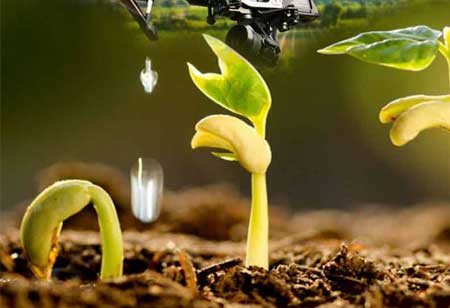Thank you for Subscribing to Agri Business Review Weekly Brief
Is the future of Agriculture in the hands of IoT?
To date, the Industrial Internet of Things (IoT) has transformed several industries, and the agriculture sector is not an exception.

By
Agri Business Review | Thursday, March 31, 2022
Stay ahead of the industry with exclusive feature stories on the top companies, expert insights and the latest news delivered straight to your inbox. Subscribe today.
Integrating IoT into agriculture could be a game-changer for humanity and the world.
FREMONT, CA: To date, the Industrial Internet of Things (IoT) has transformed several industries, and the agriculture sector is not an exception. By 2018, the connected agriculture market stood at USD 1.8 billion globally, and the transformation hasn't been done yet. It is anticipated to increase to USD 4.3 billion by 2023 at a CAGR of 19.4 percent. Innovative sensors are applied with the application of Industrial IOT in Agriculture. The sensors are now attached to the cloud through a satellite network.
Agriculture sustainably can be achieved through smart farming, a hi-tech and effective system. It is a use of deploying connected devices and innovative technologies together in agriculture. Smart Farming significantly depends on IoT, which prevents the need for farmers' and growers' physical work and thus boosts productivity in every possible method. With the present agriculture trends dependent on agriculture, IoT has brought huge advantages like efficient usage of water, optimization of inputs, and many others. What made a difference were the immense benefits and revolutionized agriculture in the coming days.
Since 2002, precision agriculture pioneer has applied its patented technology to assist growers in optimizing crop yields and quality while mitigating water consumption, energy costs, and environmental impact. The latest smart irrigation systems apply cutting-edge IoT potentials and personalized agricultural expertise to one of the fundamental hurdles facing the sector today: boosting finite land and water resources to feed a rapidly growing population. Agricultural technology firms want to make lives seamless for farmers by empowering them with technology. This efficiency could result in fast food and plant growth and improved overall quality.
IoT has allowed weather stations to automatically manage the climate conditions according to a specific set of instructions to make the greenhouses smart. Implementation of the IoT in greenhouses has avoided human intervention, thus making the whole process cost-effective and increasing accuracy at the same time. With the aid of the sensors, the water
consumption and greenhouse state can be monitored through emails or SMS alerts. In addition, with the help of the IoT, automatic and smart irrigation is performed. These sensors help offer information on pressure, humidity, temperature, and light levels.





